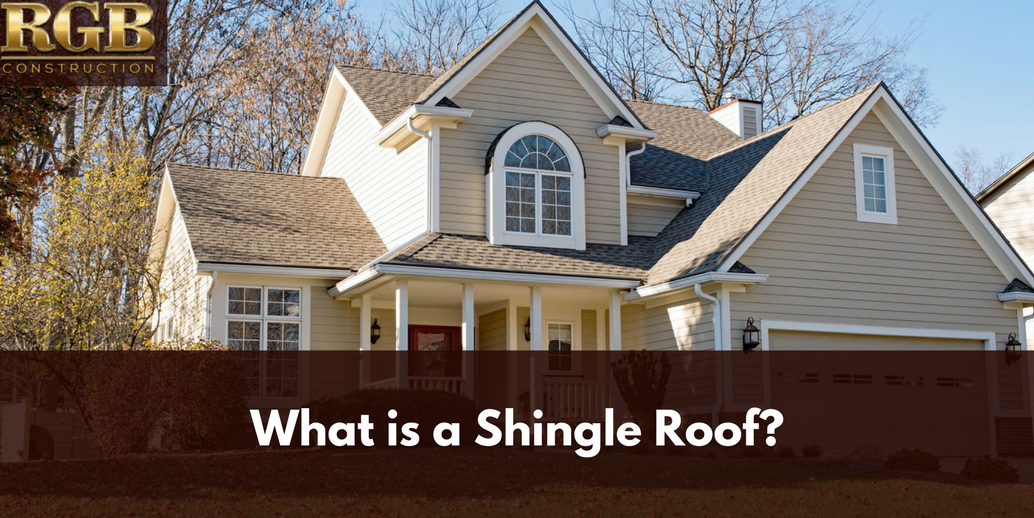You would think that the explanation of a shingle roof would just be an automatic given, but it is a bit more entailed than that as there are different types of roofing shingles and they have different advantages or benefits. So, just what is a shingle roof?
What is a Shingle Roof?
A shingle roof is one that has been covered with items that overlap one another. These items that lap over one another are called shingles and they are identified by their flat or curved rectangular shape. They are laid out or placed on a roof from the bottom of the roof’s edge in an upward pattern in which each consecutive row is set to overlap the row below it. The overlapping or interlocking creates a channel or pathway for conveying any moisture or accumulated water away from the roof. Shingles can be made of numerous materials and can be grouped into types.
Types of Roofing Shingles
Asphalt shingles
Asphalt shingles are considered the most used of any roofing shingles. They are less costly and if they are in the coated asphalt category, they will likely earn an Energy Star rating that could qualify for a rebate. Other asphalt shingles are three-tab in design, which makes them less costly and thinner. They are not as expensive as architectural or laminated shingles. Even with the lower costs, asphalt shingles do not have extended longevity as they last between 20 and 30 years.
Tile Shingles
Tile shingles are usually made of clay/terra cotta (fired clay) and they are recognizable through their red pottery like appearance and their use on Spanish inspired architecture. They are costly to buy and install, but they are a durable and lasting material. Tile shingles can be heavy so there are reservations as to whether a structure can handle their weight, and a roofing expert would have to determine their carrying capacity with a particular structure.
Wood Shingles
Wood shingles can be very appealing and more costly than asphalt shingles as they are natural and lasting. Most any hardwood variety is going to endure for 30-50 years, but maintenance will probably be involved with cracking, chipping and deterioration. Treated wood can be of help with maintaining wood shingles and alleviating fire hazards, so upkeep is of definite concern with wood shingles.
Metal Shingles
Metal roofing is usually either solid sheeting or individual metal shingles and is geared towards use with homes that have flatter or steeper roof lines. Metal roofs are more popular than ever and have become a favorite choice for use on rustic and cabin homes in various regions of the country where ice and snow can take a toll. Galvanized metal will be less expensive, but it is long lasting.
Slate Shingles
Slate (natural stone) is another popular material, particularly in the northern and eastern parts of the country, as slate is quarried in these areas and is easier to find for shingle use. These shingles are very durable and can last for at least 50 years. Real slate can be expensive and it is not unusual to see older structures with the slate still intact and in excellent condition, which could be considered for repurposing in other homes or buildings. There are slate substitutes (synthetics) available that aren’t as expensive, but they lack the lifespan of real slate.
Rubber Shingles
Rubber shingles can be made to resemble slate, asphalt and other materials. It is both lower cost and environmentally friendly and if installed correctly can last for at least 30 years.
Advantages of Shingle Roofs
The advantages of shingle roofs are many and include the fact that installation, particularly with asphalt composition shingles, is that it can be completed by an experienced contractor in a matter of days. Though not completely lightweight, they can be utilized on most any roof style, pitch or slope without a lot of extra accessories or the support of heavy equipment and additional laborers or machinery, which makes the job affordable and considerably less stressful and strenuous.
In addition, shingle roofs are less costly, versatile and low maintenance with minimal repair work. They can withstand varying weather conditions and sun penetration, and they easily shed moisture. A wide range of colors, sizes and price ranges are available as well, and fire protection is offered through most manufacturers.
Should you have additional questions concerning shingle roofs, simply complete the online contact form and an expert will get back to you with the answers you need to understand the various facets of shingle roofing.







